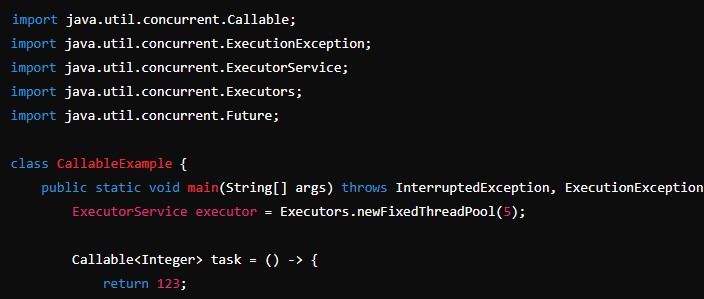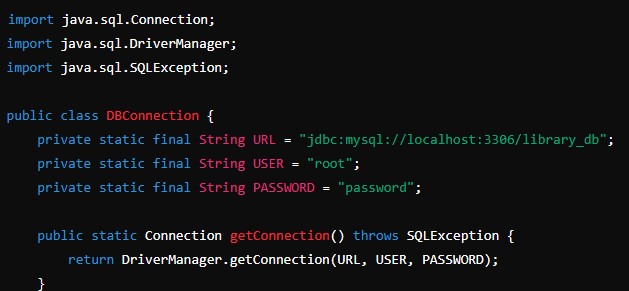Matrix multiplication is a core mathematical operation widely used in various fields such as computer science, engineering, physics, and economics. Understanding how to implement matrix multiplication in a programming language like Java is crucial for developers working in these areas. This article provides an in-depth exploration of matrix multiplication, including its mathematical foundation, a step-by-step guide to implementing it in Java, and optimizations for improving performance.
Polynomial Manipulation Program: An In-Depth Guide
Understanding Matrix Multiplication
Definition of a Matrix
A matrix is a two-dimensional array of numbers arranged in rows and columns. Each number in the matrix is called an element. Matrices are often represented by capital letters like A, B, or C, and their dimensions are given by the number of rows and columns they contain. For example, a matrix with 3 rows and 2 columns is a 3×2 matrix.
Matrix Multiplication Rules
Matrix multiplication involves multiplying two matrices to produce a third matrix. However, not all matrices can be multiplied together. For two matrices to be multiplied, the number of columns in the first matrix (A) must be equal to the number of rows in the second matrix (B). If matrix A is of size m x n and matrix B is of size n x p, the resulting matrix C will have dimensions m x p.
Mathematical Formulation
The element in the ith row and jth column of the resulting matrix C (denoted as ( c_{ij} )) is calculated as the dot product of the ith row of A and the jth column of B:
[ c_{ij} = \sum_{k=1}^{n} a_{ik} \times b_{kj} ]
Where:
- ( a_{ik} ) is the element in the ith row and kth column of matrix A.
- ( b_{kj} ) is the element in the kth row and jth column of matrix B.
Example
Consider two matrices A and B:
[ A = \begin{pmatrix} 1 & 2 & 3 \ 4 & 5 & 6 \end{pmatrix} ]
[ B = \begin{pmatrix} 7 & 8 \ 9 & 10 \ 11 & 12 \end{pmatrix} ]
The resulting matrix C will be:
[ C = A \times B = \begin{pmatrix} (1 \cdot 7 + 2 \cdot 9 + 3 \cdot 11) & (1 \cdot 8 + 2 \cdot 10 + 3 \cdot 12) \ (4 \cdot 7 + 5 \cdot 9 + 6 \cdot 11) & (4 \cdot 8 + 5 \cdot 10 + 6 \cdot 12) \end{pmatrix} ]
[ C = \begin{pmatrix} 58 & 64 \ 139 & 154 \end{pmatrix} ]
Implementing Matrix Multiplication in Java
Step-by-Step Implementation
We will now walk through the process of implementing matrix multiplication in Java. The following steps outline the procedure:
- Read Matrices from Input: Read the dimensions and elements of the matrices from the user.
- Validate Dimensions: Ensure the matrices can be multiplied (i.e., the number of columns in A equals the number of rows in B).
- Initialize the Result Matrix: Create a matrix to store the result.
- Perform Multiplication: Calculate each element of the result matrix using nested loops.
- Display the Result: Print the resulting matrix.
Java Code Example
Here is a Java program that performs matrix multiplication:
import java.util.Scanner;
public class MatrixMultiplication {
public static void main(String[] args) {
Scanner scanner = new Scanner(System.in);
// Read dimensions of Matrix A
System.out.println("Enter the number of rows and columns for Matrix A:");
int rowsA = scanner.nextInt();
int colsA = scanner.nextInt();
// Read elements of Matrix A
int[][] A = new int[rowsA][colsA];
System.out.println("Enter the elements of Matrix A:");
for (int i = 0; i < rowsA; i++) {
for (int j = 0; j < colsA; j++) {
A[i][j] = scanner.nextInt();
}
}
// Read dimensions of Matrix B
System.out.println("Enter the number of rows and columns for Matrix B:");
int rowsB = scanner.nextInt();
int colsB = scanner.nextInt();
// Check if multiplication is possible
if (colsA != rowsB) {
System.out.println("Matrix multiplication is not possible.");
return;
}
// Read elements of Matrix B
int[][] B = new int[rowsB][colsB];
System.out.println("Enter the elements of Matrix B:");
for (int i = 0; i < rowsB; i++) {
for (int j = 0; j < colsB; j++) {
B[i][j] = scanner.nextInt();
}
}
// Initialize the result matrix C
int[][] C = new int[rowsA][colsB];
// Perform matrix multiplication
for (int i = 0; i < rowsA; i++) {
for (int j = 0; j < colsB; j++) {
for (int k = 0; k < colsA; k++) {
C[i][j] += A[i][k] * B[k][j];
}
}
}
// Display the result matrix
System.out.println("The resulting matrix is:");
for (int i = 0; i < rowsA; i++) {
for (int j = 0; j < colsB; j++) {
System.out.print(C[i][j] + " ");
}
System.out.println();
}
scanner.close();
}
}Explanation of the Code
- Input Reading: The program starts by reading the dimensions and elements of the matrices A and B from the user.
- Dimension Validation: It checks if the number of columns in matrix A is equal to the number of rows in matrix B.
- Result Matrix Initialization: A result matrix C is initialized with dimensions corresponding to the number of rows of A and the number of columns of B.
- Matrix Multiplication: The program uses nested loops to compute the dot products for each element in the resulting matrix.
- Output: The resulting matrix C is printed in a readable format.
Optimizing Matrix Multiplication
While the basic matrix multiplication algorithm works, it can be inefficient for large matrices due to its time complexity of (O(n^3)). Here are some optimization techniques:
Strassen’s Algorithm
Strassen’s Algorithm reduces the time complexity to approximately (O(n^{2.81})) by dividing matrices into smaller submatrices and performing multiplications on these submatrices. This divide-and-conquer approach is more efficient for large matrices.
Parallel Processing
Matrix multiplication can be parallelized to take advantage of multi-core processors. Java’s ForkJoinPool and Parallel Streams can be used to distribute the workload across multiple threads, significantly speeding up the computation for large matrices.
Example of Parallel Processing in Java
Here is an example of how to use parallel streams to optimize matrix multiplication:
import java.util.Arrays;
import java.util.concurrent.ForkJoinPool;
public class ParallelMatrixMultiplication {
public static void main(String[] args) {
int[][] A = {
{1, 2, 3},
{4, 5, 6}
};
int[][] B = {
{7, 8},
{9, 10},
{11, 12}
};
int rowsA = A.length;
int colsA = A[0].length;
int rowsB = B.length;
int colsB = B[0].length;
if (colsA != rowsB) {
throw new IllegalArgumentException("Number of columns in A must be equal to the number of rows in B.");
}
int[][] C = new int[rowsA][colsB];
ForkJoinPool pool = new ForkJoinPool();
pool.submit(() ->
Arrays.stream(C).parallel().forEach(row -> {
int rowIndex = Arrays.asList(C).indexOf(row);
for (int j = 0; j < colsB; j++) {
for (int k = 0; k < colsA; k++) {
row[j] += A[rowIndex][k] * B[k][j];
}
}
})
).join();
// Display the result matrix
System.out.println("The resulting matrix is:");
for (int[] row : C) {
for (int value : row) {
System.out.print(value + " ");
}
System.out.println();
}
}
}Explanation of the Parallel Code
- ForkJoinPool: A
ForkJoinPoolis created to manage parallel tasks. - Parallel Streams: The result matrix C is processed using parallel streams to distribute the computation across multiple threads.
- Matrix Multiplication: Each element of the resulting matrix is computed in parallel.
Practical Applications of Matrix Multiplication in Java
Matrix multiplication is essential in many practical applications, including:
Computer Graphics
In computer graphics, matrices are used to perform transformations such as translation, rotation, and scaling of objects.
Matrix multiplication allows these transformations to be applied efficiently to 3D models and scenes.
Machine Learning
In machine learning, matrices represent datasets and parameters. Matrix multiplication is used in various algorithms, including neural networks, where it helps compute forward passes, backpropagation, and parameter updates.
Scientific Computing
Matrix multiplication is widely used in scientific computing for simulations, solving systems of linear equations, and performing numerical analysis. High-performance matrix multiplication implementations are crucial for these applications.
Economics and Statistics
In economics and statistics, matrices are used to model complex systems, perform linear regression, and conduct multivariate analysis. Matrix multiplication helps in computing outcomes and analyzing relationships within data.
Conclusion
Matrix multiplication is a fundamental operation with broad applications across different fields. Understanding its mathematical foundations and implementing it efficiently in a programming language like Java is essential for developers. While the basic algorithm provides a good starting point, optimizing matrix multiplication through techniques like Strassen’s Algorithm and parallel processing can significantly improve performance, especially for large matrices. Whether you are working in computer graphics, machine learning, scientific computing, or economics, mastering matrix multiplication in Java will enhance your ability to tackle complex problems and develop robust solutions.




